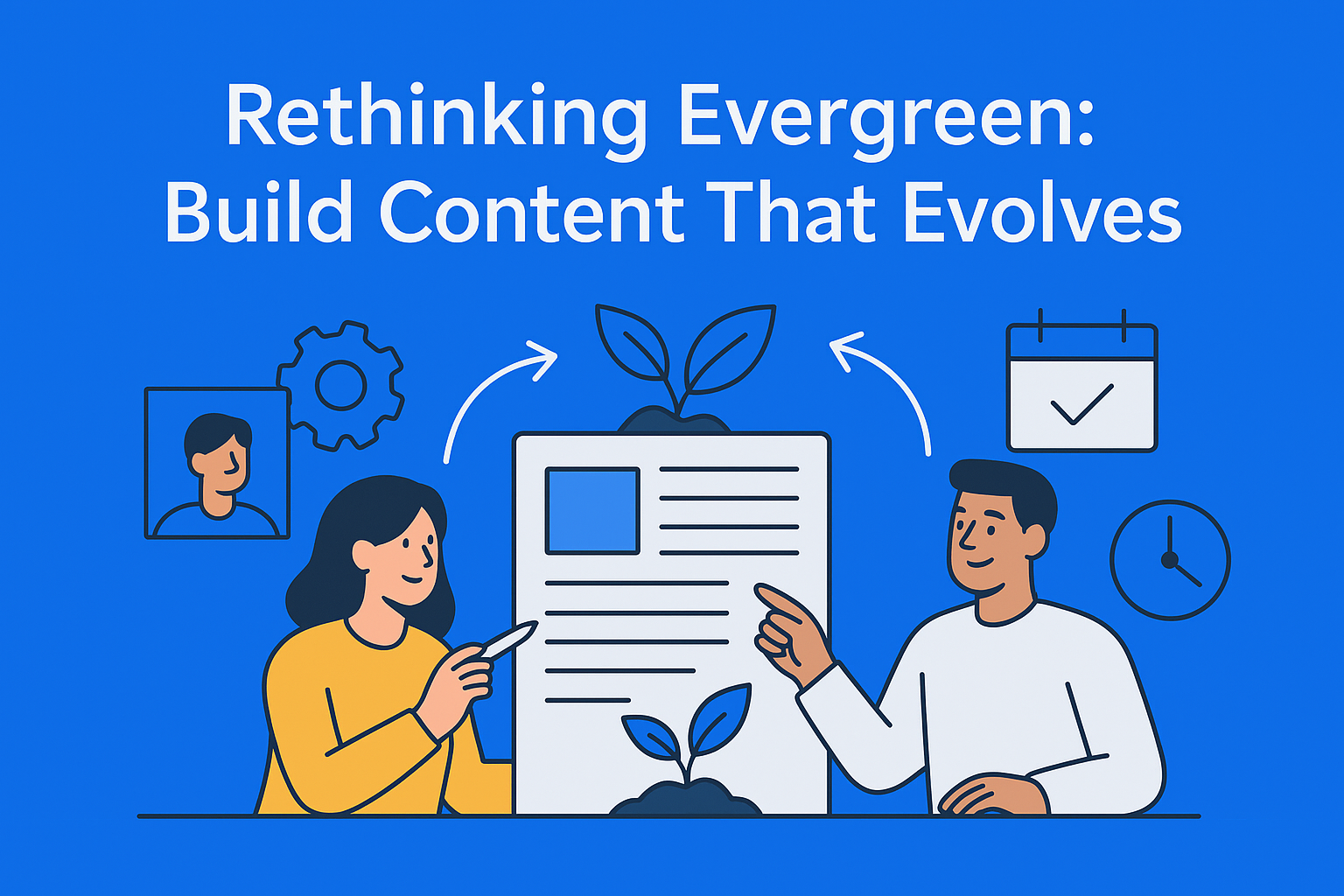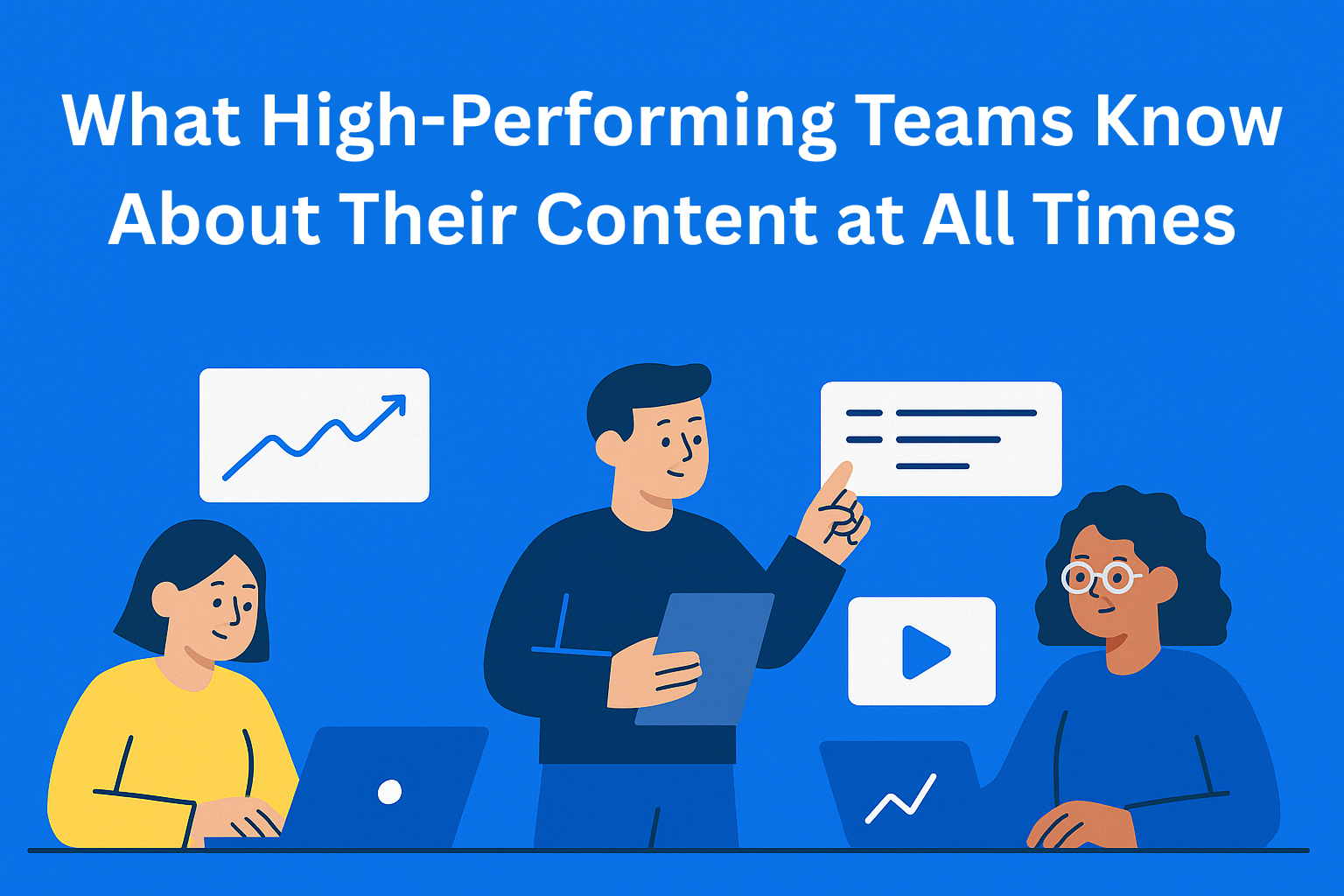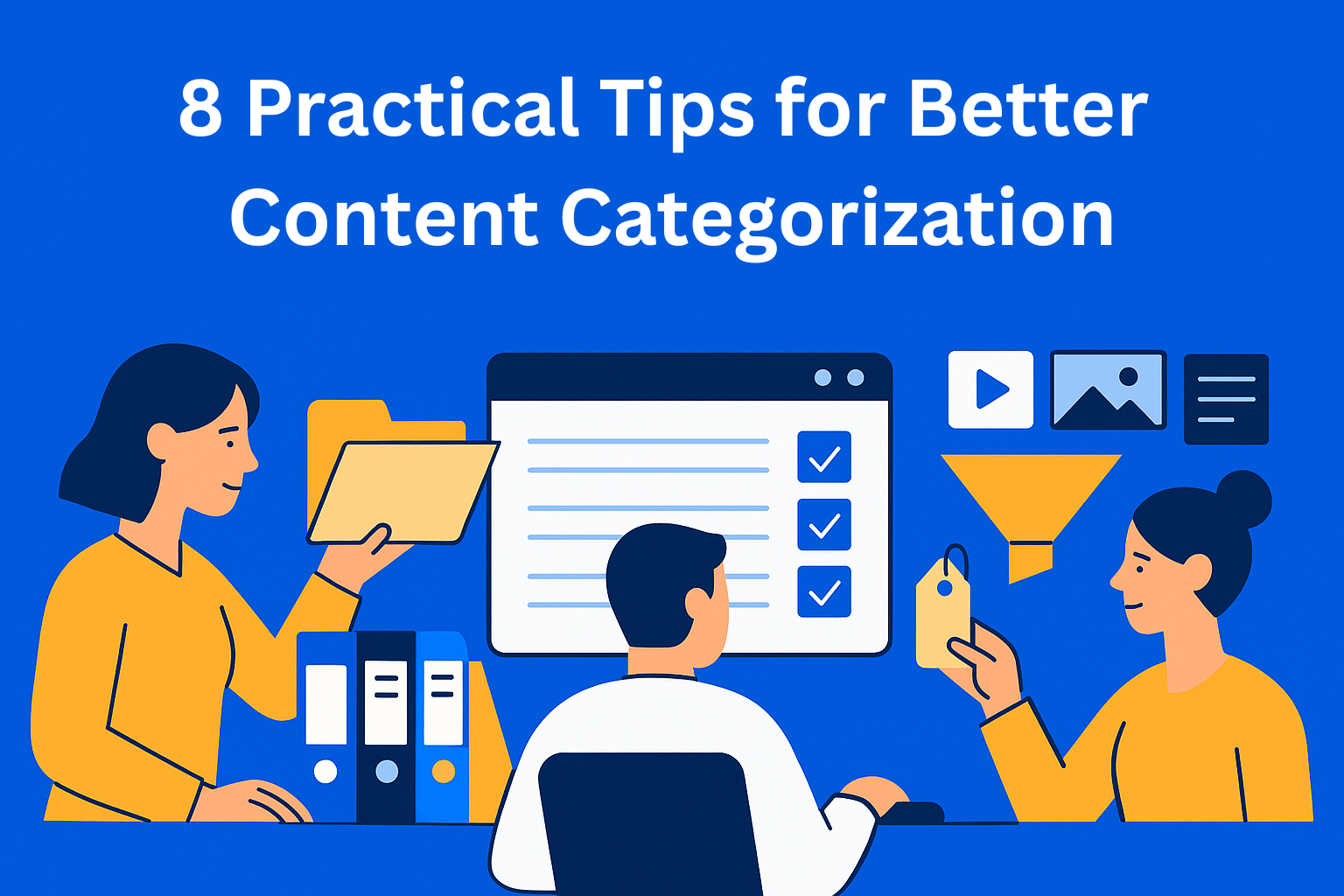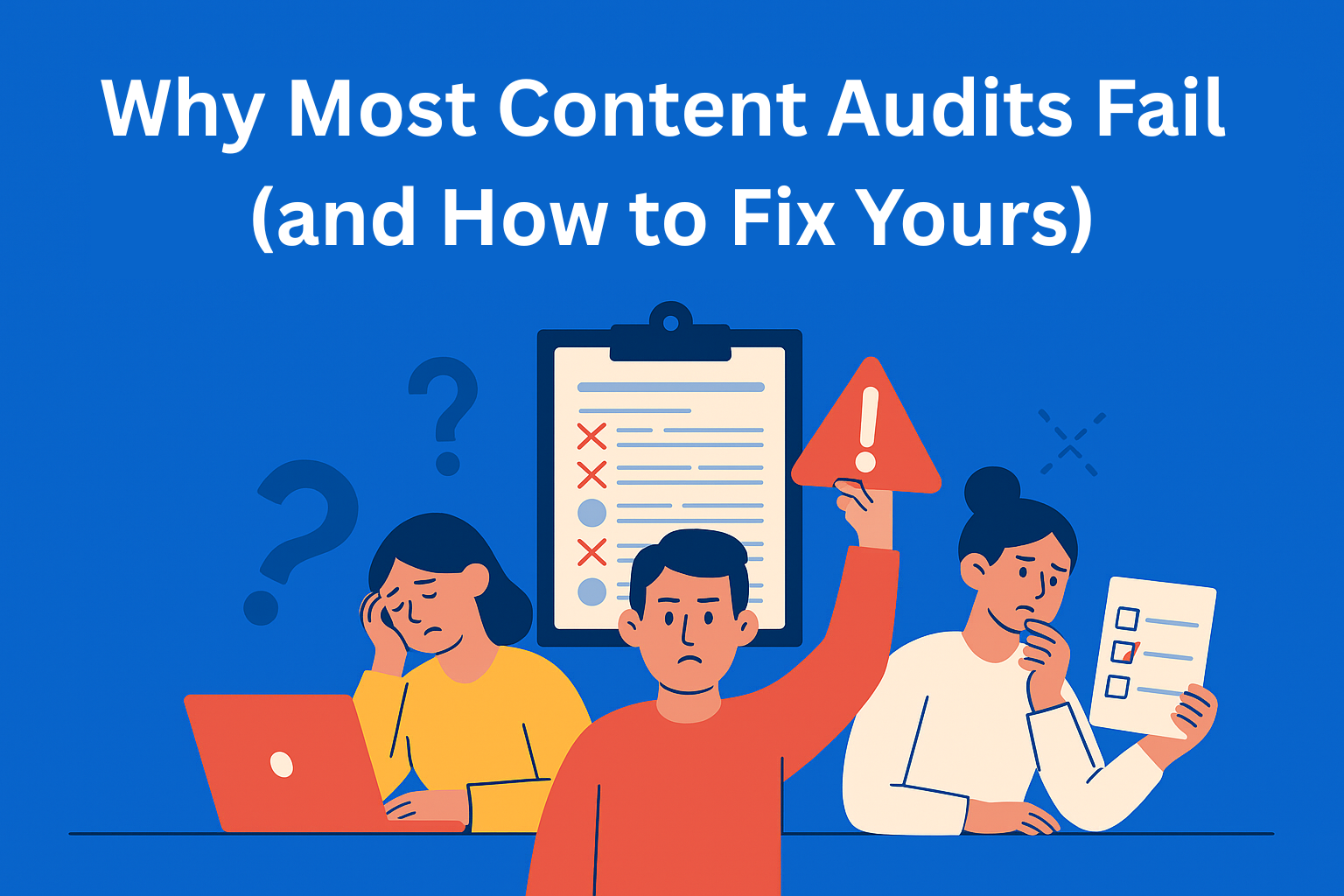Rethinking ‘Evergreen’: How to Build Content That Ages With Your Audience
Evergreen content isn’t about creating something timeless - it’s about creating something adaptable. When your content grows alongside your audience, it stays relevant, useful, and valuable long after it’s published.

When content teams talk about evergreen content, they usually mean: “Write it once and forget about it for the next five years.” It’s timeless, always relevant, and no maintenance required - in theory. But in reality? Very few topics remain truly evergreen, and audiences don’t stay still long enough for content to remain relevant forever.
The internet moves, markets shift, buyer expectations evolve, and even language changes. What “evergreen” really means today isn’t “never update” - it means “built to evolve.”
Modern evergreen content isn’t static. It grows, adapts, and ages with the people reading it.
Think of it less like a finished painting and more like a living garden. You don’t replant the entire thing every season, but you do prune, fertilize, re-shape, and occasionally replace what no longer fits.
Key Takeaways
- Evergreen doesn’t mean “never updated” - Modern evergreen content is meant to evolve over time, not stay frozen after publishing.
- Context expires faster than information - The facts may still be correct, but the framing, language, and audience expectations change.
- Frameworks outlive instructions - Principles and models remain relevant even as tools, tactics, or trends shift.
- Plan for maintenance from the start - Modular structure, clear update points, and versioning make refreshing easy without full rewrites.
- Evergreen content compounds over time - When continuously maintained, it becomes a long-term growth asset, not a one-time post.
Why Traditional Evergreen Content No Longer Works the Way It Used To
There was a time when “The Ultimate Guide to X” could sit on your blog untouched for years and still be valuable. But now:
- technology updates faster
- buying behavior changes more often
- people expect more depth and context
- audiences notice stale information immediately
- competition is higher (and faster)
A guide written three years ago might still be technically correct, but often it no longer matches how the audience thinks or talks about the topic.
For example:
“How to Build a Sales Funnel” from 2019 didn’t account for dark social, ungated content, or the shift toward relationship-driven discovery. The mechanics may be the same, but the framing isn’t.
Evergreen information can last. Evergreen context can’t - because context lives in culture, and culture moves.
The New Definition of Evergreen Content
Modern evergreen content has three qualities:
| QUALITY | WHAT IT MEANS |
|---|---|
| Adaptable | Designed to be updated easily without rewriting from scratch |
| Audience-led | Reflects how your readers think today, not how they thought once |
| Built for longevity | Structured so it can evolve, not expire |
Instead of writing “definitive answers,” great evergreen content provides frameworks - because frameworks live longer than instructions.
A tutorial becomes obsolete. A mindset or model grows with new examples.
How to Build Evergreen Content That Actually Ages Well
Below are core elements of modern, evolving evergreen content and how to implement them.
1. Start with a Living Framework, Not a Frozen Answer
Static content = “Here’s the exact step-by-step way to do this.”
Evolving content = “Here’s the principle behind it, so you can apply it even as things change.”
This keeps the insight relevant even as the tactics shift.
2. Build in Update Points Instead of Rewrites
When planning the piece, decide in advance:
- which parts will likely need revisions
- which examples will age fastest
- which external resources may break
Modular content means you can update small sections without lifting the whole floorboard.
3. Anchor the Piece in Why, Not Just How
“How-to” content has a shorter shelf life.
“Why this matters” stays relevant longer.
People return to perspective more than instructions.
4. Add versioning and update logs
Just like software, evergreen content benefits from release notes:
- Version 1.0 - publish date
- Version 2.0 - updated trends
- Version 3.0 - new stats and examples
It signals credibility and ongoing relevance.
How to Maintain Evergreen Content Without Burning Out
The biggest reason content goes stale isn’t laziness - it’s lack of structure.
If updates require digging through 12 docs, a Slack thread, a Notion page, and your own memory… you won’t update it. You’ll quietly pretend it’s still fine.
That’s why centralizing everything matters.
This is where tools like EasyContent make maintenance sustainable - because instead of hunting for the latest version or trying to remember when something was last updated, you can store guidelines, track revisions, and reassign ownership all inside the content item. This way, you're always in the loop.
Examples of Content That Ages With the Audience
What ages well
- Frameworks
- Decision models
- Foundational strategy
- Beginner onboarding content
- “X vs Y” pages centered on principles, not features
- FAQs driven by real user behavior
What turns stale fast
- Screenshots with old UI
- Trend-based advice framed as a universal truth
- Definitive statements that assume the market won’t shift
- Hard-coded stats with no context
- “One right way” style guides
The Cadence Question: How Often Should You Update?
Evergreen content isn’t set-and-forget - but it’s also not high-frequency.
A realistic cadence:
- Light scan: every 3-4 months
- Deep revision: every 6-12 months
- Rewrite only if directionally outdated
Your highest-trafficked pieces should be your highest-maintained pieces.
The Real Benefit: Compounding Value
When done right, evergreen content becomes asset-based marketing - not reactive content.
Instead of constantly producing more to get the same traffic, you build compounding value:
- content gets reused
- rankings strengthen
- trust deepens
Evergreen isn’t “write once and walk away.”
It’s “write once and grow the value forever.”
Conclusion
“Evergreen” content shouldn’t be a time capsule. It should be a living resource - something that evolves side-by-side with your audience. When you plan for growth instead of permanence, your content doesn’t expire…it matures.
Because in a landscape where everyone is chasing what’s new, the advantage often belongs to the brands who know how to keep what’s relevant - and let it stay relevant.






